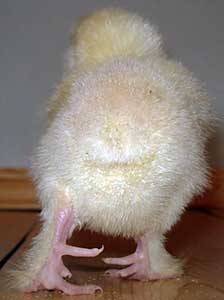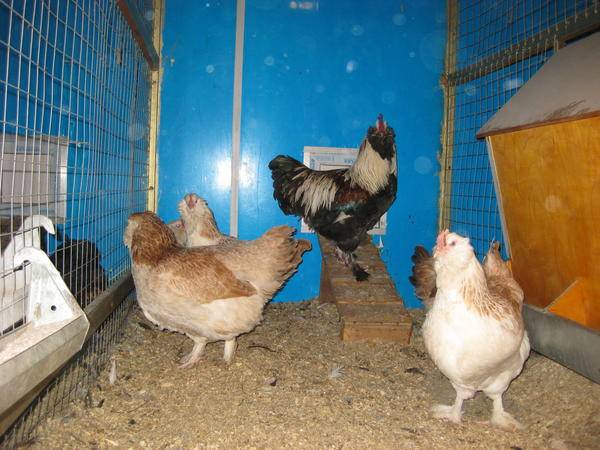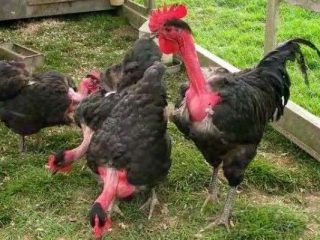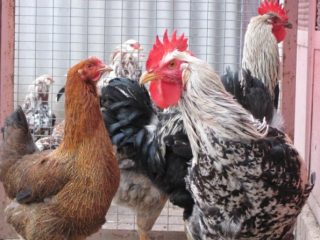Content
Another very decorative breed of chickens for meat production was once bred in France in the town of Faverolles. To develop the breed, local chickens were used, which were crossed with traditional meat breeds exported from India: gate And cochinquin.
Faverolles chickens were registered in France as a breed in the 60s of the 19th century. In 1886, chickens came to England, where during the selection process their standard was slightly changed, based on exhibition requirements. The English version of the breed has longer tail feathers than the German or French populations.
Originally bred as a meat breed, by the end of the 19th century, Faverolles began to give way to other breeds of chickens, and today Faverolles can be seen more often at exhibitions than in backyards.
It should be noted that the breed is undeservedly forgotten. In addition to tasty meat, this chicken can also produce fairly large eggs. However, private owners who keep chickens not only for production, but also for the soul, are increasingly keeping firewood, in addition to productive characteristics, which also have an original appearance.
Birds, like all self-respecting chickens, walk on three fingers. An extra toe grows on the back of their metatarsus, next to the fourth.
Description, productive characteristics of the Faverol chicken breed
Faveroli are massive chickens with rather short legs. Hens look stockier than roosters. The breed is heavy, can reach 3.6 kg. Taking into account the meat direction, these birds have good egg production: chickens lay 4 eggs per week, which will amount to more than 200 eggs per year. Chickens lay eggs best in the first year of life. In the second year, egg production decreases, but egg size increases. The eggshell is light brown.
Chickens are frost-resistant and lay eggs even at temperatures chicken coop below + 10°C, the main thing is that the air temperature in the room is not minus.
Chickens of the Faverol breed
Standard fireroll with photo
A small head with a powerful light beak. A simple straight comb. The eyes are red-orange, the earrings are poorly defined. Chickens have whiskers running from the eyes to the bottom of the beak, connecting into a frill on the neck. In roosters of the Fireroll breed, this sign is less pronounced, although it is also present.
The direction of growth of the feathers of this decoration differs from the rest of the neck plumage. The feathers on the sideburns and frill are directed towards the back of the head.
The neck of the faverolles is of medium length with a long mane falling down the back.
The body format for hens is square, for roosters it is a standing rectangle. Chickens have a horizontal body posture and a wide, fleshy chest.
With a fairly massive body, faverolles, like all meat breeds of animals, have thin bones, which makes it possible to obtain a maximum of meat with a minimum of waste.
The loin is dense with thick feathers.
The tail is set vertically, the tail feathers are short. The chickens are quite lush.
The high feathers are pressed tightly against the body.
Legs are short. Moreover, chickens have shorter metatarsals than roosters, making the chicken look stockier. There is dense feathering on the metatarsus.
The fifth finger, which distinguishes the faverolles, is located above the fourth and is directed upward, while the fourth sticks out horizontally. In addition, the fifth finger is equipped with a long claw.
The standard officially recognizes three colors of firewood: white, salmon and mahogany.
As you can see in the photo, the white color is not pure white, after all. In the mane of chickens there are feathers with a black border and a white shaft, in the tail the feathers are pure black.
In salmon, only the chicken has a beige color. The rooster has almost white feathers on his head, mane and lower back, black chest, belly and tail and a red feather on his shoulders. Salmon faverolle is the most common color of this breed of chicken.
Among salmon faverolles, roosters with colored spots on the mane, motley bellies and frills, with white splashes on the belly and chest, without red feathers on the back and wings, are culled from breeding. Chickens should not have black feathers in the frill, with a white feather shaft and not salmon coloring.
Mahogany chickens are similar to darkened salmon. Roosters have dark red feathers on their heads, necks and lower backs instead of light ones.
The standard description of the breed does not include other colors, but different countries may have their own standards for this breed. Therefore, among the firerolls you sometimes find:
Silver
Silver roosters are culled if they have black feathers in their manes or yellow feathers.
Blue
Black
The birds have abundant feathers, the plumage is loose. This feather structure helps them retain heat during the colder months. The skin is thin.
Sexual dimorphism in chickens appears after 2 months.The cockerels begin to grow sideburns and frills, and the feathers at the ends of their wings are darker than those of the hens.
When breeding faverolles for meat, color is not particularly important, so you can also find faverolles of salmon-blue, red-piebald, striped, and ermine colors. Birds may be purebred, but will not be allowed into the exhibition.
These signs are:
- absence of the fifth finger or its non-standard position;
- yellow beak;
- large comb;
- yellow or blue metatarsals;
- the presence of a “hawk tuft” on the metatarsals;
- cuffs;
- low-feathered metatarsals;
- lack of characteristic feathers in the head area of chickens;
- a long tail;
- too large “pillows” near the rump;
- poorly developed muscles;
- short thin neck;
- too short or too long metatarsals.
Fireballs have a calm character and quickly become tame. They are sedentary, but love to eat, which is why they are prone to obesity.
Productive characteristics of the breed
Since the Faverol breed was created as a meat breed, the main emphasis was on the chickens quickly gaining weight. By 4.5 months, a farevol rooster can weigh 3 kg.
Weight of fireballs according to the standards of breed associations of different countries, kg
| A country | Rooster | Chicken | Cockerel | Pullets |
|---|---|---|---|---|
| Great Britain | 4,08-4,98 | 3,4 – 4,3 | 3,4-4,53 | 3,17 – 4,08 |
| Australia | 3,6 – 4,5 | 3,0 – 4,0 | ||
| USA | 4,0 | 3,0 | ||
| France | 3,5 – 4,0 | 2,8 – 3,5 |
In addition to the large meat variety of the faverolle, a miniature version of this breed was also bred. Miniature Faveroli roosters weigh 1130-1360 g, hens 907-1133 g. Their egg production is 120 eggs per year.There are for miniature faves and relaxations in the number of colors.
Content Features
Due to its size and heavy weight, the fireball justifies the saying “a chicken is not a bird.” He doesn't like to fly. But sitting on the ground for chickens, although perhaps, is a stressful state. On instinct, chickens try to climb somewhere higher. It makes no sense to make high perches for firewood, even if you provide them with a ladder. Flying from a great height, heavy chickens can damage their paws. It is better to make perches 30–40 cm high for the fireballs, where they can sleep peacefully at night, but will not harm themselves when they jump off the crossbar.
The perch is made so thick that the bird can wrap its fingers around it from above. In the upper part, the corners are smoothed so that they do not put pressure on the chickens’ fingers.
A thick layer of straw or sawdust is laid on the floor of the chicken coop.
When building a chicken coop, this point must be taken into account.
Faveroli are not suitable for keeping in cages. The minimum they need is an enclosure. But experienced chicken breeders say that the enclosure is too small for them, since due to the tendency to obesity, this breed must be provided with the opportunity for physical movement, which is actually possible only on free range and some underfeeding, in order to force the bird to try to get its own food on its own.
More active and arrogant chickens of other breeds may begin to beat the fireballs.
Breeding
Fireballs begin to lay eggs at six months, provided that there is at least 13 hours of daylight. Faveroli are not afraid of frost and can lay eggs even in winter.Chickens of this breed are not very good hens, so eggs are usually collected for incubation. Hatching eggs can only be collected from hens that have reached one year of age. In this case, eggs are stored for no longer than 2 weeks at a temperature of +10°.
The initial stock should be purchased from trusted nurseries, since purebred chickens of this breed are quite rare today. Good pedigree birds are supplied by Hungary and Germany, but there are already several Russian purebred lines of firebirds.
Features of feeding
Due to the too lush plumage, it is not advisable to feed wet mash to chickens of this breed. Therefore, when maintaining firewood, preference is given to dry feed. In summer, up to a third of finely chopped grass may be present in the diet.
150–160 g of mixed feed is given per head per day. If the bird gets fat, the norm is cut in half.
In winter, instead of grass, chickens are given sprouted grain.
Reviews from owners of Faverole chickens
Conclusion
Faverol is a fairly rare breed today and not many people can afford to keep it, not even because of its rarity, but because of the price of young animals and eggs. The cost of a six-month-old chicken starts from 5,000 rubles. But if you manage to get several of these chickens, you will not only be able to admire the beautiful birds, but also eat meat that tastes like pheasant.





















